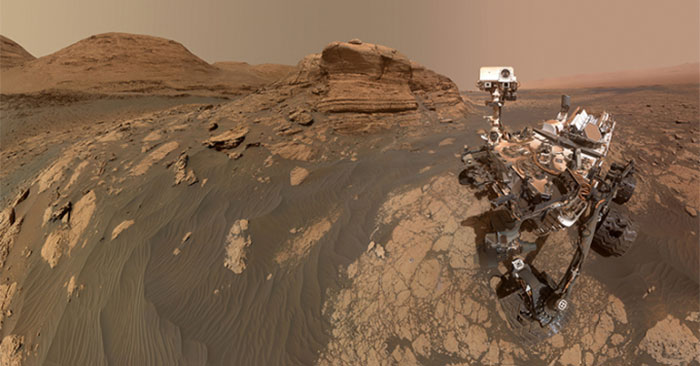NASA’s Curiosity rover celebrates its 10th anniversary of landing on Mars, bringing back valuable information related to life on the Red Planet.

Curiosity selfie on Mars taken on March 30, 2021. Photo: NASA/JPL-Caltech/MSSS
Curiosity was launched into space aboard an Atlas rocket on November 26, 2011, from Cape Canaveral Space Force Station, Florida. Approximately nine months later, on August 5, 2012, Curiosity successfully landed in Gale Crater on the Red Planet.
Since then, Curiosity has traveled about 29 kilometers and climbed 625 meters while exploring Gale Crater and Mount Sharp. The rover has analyzed 41 rock and soil samples, using scientific tools to uncover what they might reveal about Earth. Engineers have also worked diligently to minimize wear and tear and keep the rover rolling. Earlier this year, NASA announced an extension of Curiosity’s mission by three years, continuing to be one of NASA’s significant astrobiology missions.
Over the past decade, Curiosity has provided valuable information about Mars. The primary goal of this rover is to determine whether Mars was ever suitable for life. Curiosity studies the Martian sky, capturing images of bright clouds and moving moons. The rover’s radiation sensors allow experts to measure the high-energy radiation levels that future astronauts would be exposed to on the surface of Mars, helping NASA understand how to ensure their safety.
Curiosity has also helped establish that liquid water, chemical components, and nutrients essential for life existed for at least tens of millions of years in Gale Crater. This crater once housed a lake whose size fluctuated over time. Each higher layer on Mount Sharp serves as a record of more recent periods of the Martian environment.
Currently, Curiosity is traversing a canyon that marks the transition to a new area. This region is believed to have formed as water dried up, leaving behind salty minerals known as sulfates. The research team plans to spend the next few years exploring this sulfate-rich area, targeting several locations such as Gediz Vallis and a cluster of large cracks that indicate the impact of groundwater on Mount Sharp.


















































